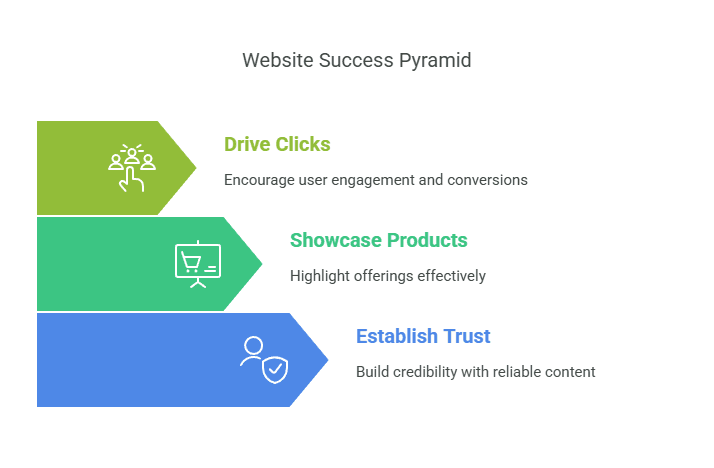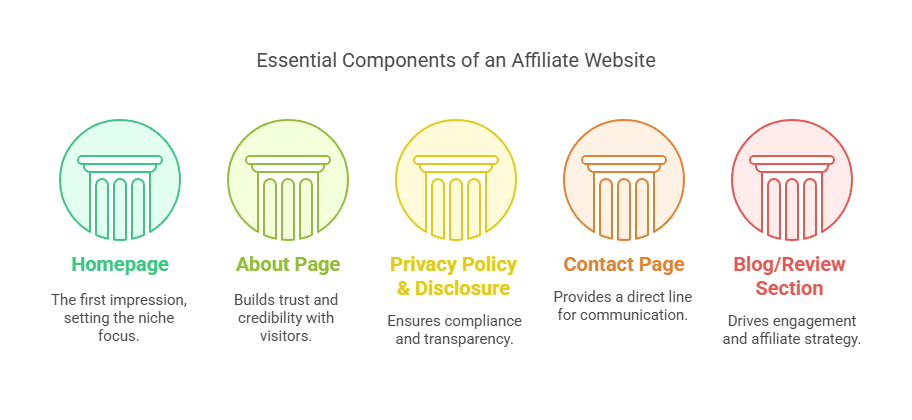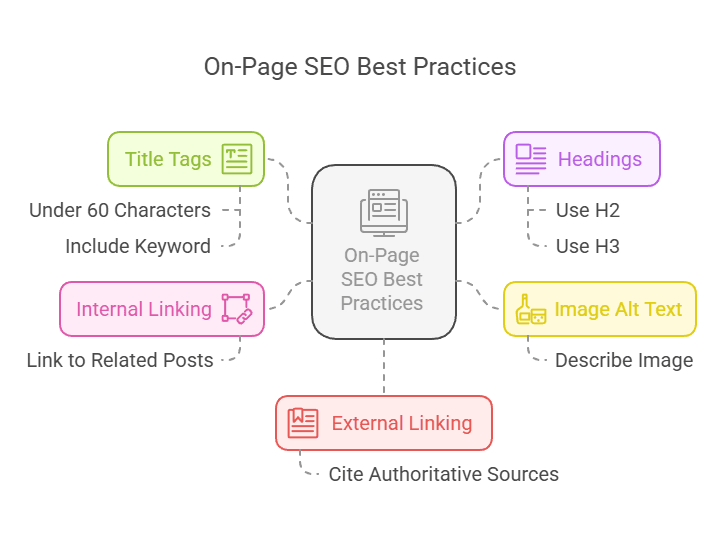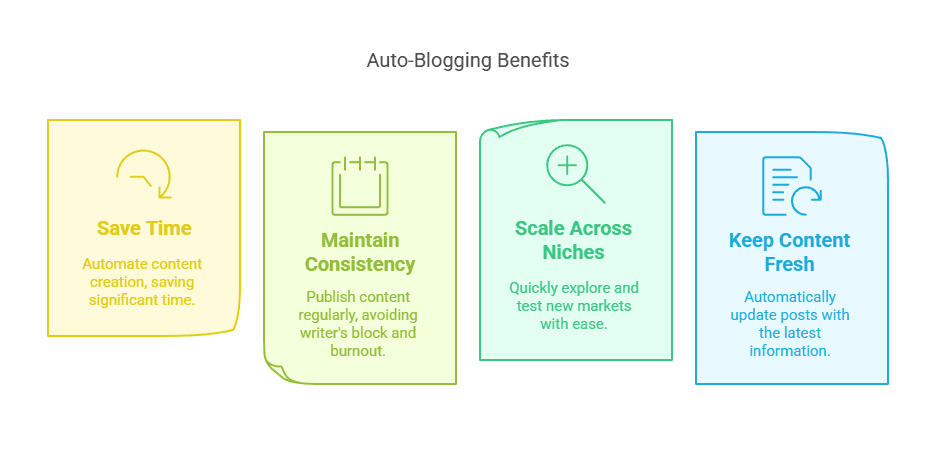Wondering What Kind of Website Do You Need to Be an Amazon Affiliate? Find out how to create a winning platform and maximize your affiliate success!
Becoming an Amazon affiliate opens a world of passive income possibilities.
Yet success hinges on one key factor: your website.
What type of site will help you earn commissions consistently?
Let’s dive into the essentials.
Why Your Website Matters

Every affiliate links back to a single source—your site. Think of your website as a virtual storefront. It must:
- Establish trust
- Showcase products
- Drive clicks
A poorly structured site repels visitors. A strong site converts them into buyers. You need a foundation that supports content, SEO, and user experience.
Understanding the Amazon Associate Program
Amazon Associates is a performance-based program. You earn when someone clicks your unique link and buys. Commissions vary by category. Electronics might pay 1%, while luxury beauty can go up to 10%.
Key points you must know:
- Cookie window: 24 hours. If a visitor buys within that window, you earn.
- Prohibited content: No incentivized clicks.
- Affiliate disclosures: You must disclose your affiliate relationship on each page.
Getting approved requires a live site with original content. Let’s explore what that site looks like.
Core Elements of an Amazon Affiliate Website

Your site should include:
- Homepage: Clear niche focus.
- About page: Builds credibility.
- Privacy policy & affiliate disclosure: Mandatory per Amazon rules.
- Contact page: Shows transparency.
- Blog or review section: The heart of your affiliate strategy.
Missing any of these undermines trust and may lead to rejection during Amazon’s review process.
Picking the Right Website Type
You don’t need a million-page empire to start. Choose one of these site models:
1. Niche Blog
Focus on a specific subject—coffee makers, camping gear, or skincare tools. A tight niche helps you:
- Rank faster for targeted keywords
- Attract a dedicated audience
Actionable tip: Start with 10 cornerstone posts. Deep-dive into product types, common questions, and how-to guides.
2. Product Review Site
Write in-depth reviews of individual products or top-10 lists. Structure each review with:
- Pros & cons
- Key features
- Comparison tables
This format directly satisfies purchase intent and drives affiliate clicks.
3. Deal & Coupon Site
Curate the latest Amazon deals, lightning sales, and coupon codes. Visitors come looking to save money. You earn when they click through and purchase.
4. Gift Guides & Comparison Sites
Create seasonal gift guides (e.g., “Top 10 Mother’s Day Gifts”). Or build comparison pages (“Best 20-Inch Suitcases for Travelers”). These guides address search queries like “best gifts for dad”.
5. How-To & Tutorial Sites
Teach readers how to use a product: “How to Set Up the Ultimate Home Theater.” Embed affiliate links within steps or tool lists.
Technical Foundations
Even the best design can’t compensate for poor performance. Nail these technical basics:
Domain & Hosting
- Domain: Choose a .com if possible. Keep it succinct and brandable.
- Hosting: Prioritize speed and uptime. Look for SSD storage, CDN integration, and 24/7 support.
Content Management System (CMS)
WordPress reigns supreme for affiliates:
- Easy to use
- Vast plugin ecosystem
- SEO-friendly
Alternatives like Ghost or Joomla exist, but WordPress plugins streamline affiliate tasks.
Site Structure & Design
- Responsive design: Mobile traffic often tops 60%.
- Clean navigation: Use categories for niche content.
- Fast load times: Aim for under 2 seconds.
Remove clutter. A simple layout keeps readers focused on your content and calls to action.
Essential Plugins & Tools
- Affiliate link cloak: Pretty Links or ThirstyAffiliates
- SEO plugin: Yoast SEO or Rank Math
- Caching: WP Rocket or W3 Total Cache
- Analytics: Google Analytics + Site Kit
- Schema markup: WP Schema Pro to boost rich snippets
These plugins automate repetitive tasks and improve your site’s performance.
Crafting a Bulletproof Content Strategy
Keyword Research
You need two types of keywords:
- Commercial intent: “Best noise-cancelling headphones”
- Informational intent: “How do noise-cancelling headphones work?”
Tools like Ahrefs or Ubersuggest reveal search volume and difficulty. Prioritize low-competition, high-intent phrases.
Topic Planning
Build a content calendar covering:
- Review posts
- Comparison articles
- How-to guides
- Buying guides
Rotate formats to keep readers engaged and signal expertise to search engines.
Writing Quality Content
- Short paragraphs: One idea per paragraph.
- Active voice: Write “You’ll learn…” instead of “It will be learned…”
- Simple words: Use “use” instead of “utilize.”
- Examples & stories: Share a quick anecdote to illustrate a point.
Ask questions to engage: “Have you ever struggled to find the perfect coffee grinder?”
On-Page SEO Best Practices

- Title tags: Keep under 60 characters, include keyword.
- Headings: Use H2 and H3 for structure.
- Image alt text: Describe what’s in the image.
- Internal linking: Link to related posts.
- External linking: Cite authoritative sources.
These steps help Google understand and rank your content.
Legal Requirements & Disclosures
Amazon mandates:
- Affiliate disclosure: “I earn a commission when you buy through links on this site.”
- Privacy policy: Outline data collection and cookies.
Place disclosures above the fold or at the start of each post. This maintains compliance and builds trust.
Driving Targeted Traffic
Organic Search
- Publish consistently
- Update old content
- Build backlinks through guest posts or outreach
Social Media
- Pin product images on Pinterest with rich descriptions.
- Share tutorial snippets on Facebook groups.
Email Marketing
Capture emails with a simple opt-in:
“Get my 5-step guide to choosing the perfect blender, straight to your inbox.”
Then promote new content and deals.
Paid Ads
Consider retargeting visitors with Facebook or Google Ads. A small budget can yield high ROI if you target cart abandoners or page viewers.
Tracking & Optimization
Monitor:
- Click-through rate (CTR) in your Amazon dashboard.
- Conversion rate on your site (via Google Analytics goals).
- Bounce rate on key pages.
Use A/B testing for headlines, images, and calls to action. Small tweaks can lift your earnings.
Scaling with Automation
Manual blogging becomes a grind when you want volume. That’s where auto-blogging shines. Rather than spending days on each article, imagine generating hundreds in minutes.
Introducing Affpilot AI

Affpilot AI is an auto-blogging tool built for Amazon affiliates. It can:
- Generate & publish up to 1,000 Amazon affiliate posts with your link embedded
- Automatically pull real-time product data for accurate details
- Craft SEO-optimized reviews to rank higher
- Publish directly to WordPress or Blogger in one click
With support for 100+ niches, you choose your market. Affpilot handles the heavy lifting.
How to Use Affpilot AI for Amazon Affiliate Articles
- Log in to Affpilot: Head to Affpilot.com and access your dashboard.
- Select “Amazon Review Article”: Choose your AI model—GPT-4.o, GPT-4, or GPT-4.o mini.
- Input keywords or ASINs: One per line for multi-product reviews.
- Customize options: Set tone, length, and focus areas.
- Add your Amazon API or toggle “Write without API”: Enter your store ID.
- Click “Write Amazon Review Article”: Watch Affpilot generate a draft.
- Review & publish: Edit if needed, then push to your site instantly
Imagine unlocking 1,000 articles without writing a single sentence yourself.
Benefits of Auto-Blogging

- Save hours: What took 4–6 hours now takes minutes.
- Maintain consistency: Publish daily without burnout.
- Scale across niches: Test new markets quickly.
- Keep content fresh: Update posts with new data automatically.
Automation doesn’t replace quality. It amplifies your reach and focus.
A Personal Note
When I started, every review took me half a day. I’d juggle screenshots, specs, pros and cons. Then I discovered auto-blogging. Overnight, I went from 10 posts a month to 100. My affiliate income tripled. That shift allowed me to focus on promotion and strategy.
Your Next Steps
- Define your niche and site model.
- Set up your domain, hosting, and CMS.
- Build a content plan covering reviews, guides, and tutorials.
- Optimize each post for SEO and compliance.
- Leverage Affpilot AI to scale faster than ever.
What niche will you conquer first?
Whether you’re a beginner or veteran affiliate, the right website and the right tools change everything. Your affiliate journey begins with a solid site. Your scaling journey kicks into high gear with Affpilot AI.
Ready to start? Explore Affpilot AI today and transform how you blog.




